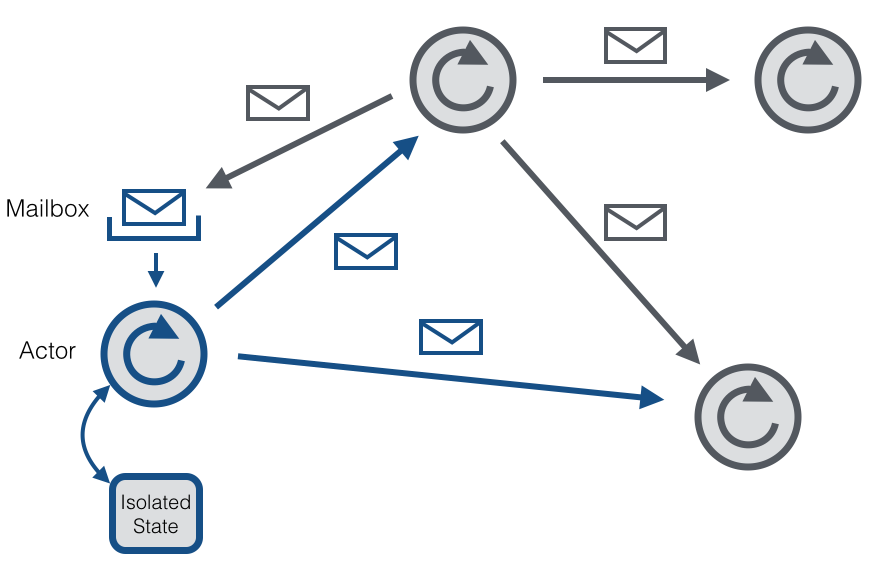...
This page discusses the implementation of Flink's distributed communication via Akka (http://akka.io), which has been adopted in version 0.9. With Akka, all remote procedure calls are now realized as asynchronous messages. This mainly affects the components JobManager, `TaskManager` and `JobClient` TaskManager and JobClient. In the future, it is likely that even more components will be transformed into an actor, allowing them to send and process asynchronous messages.
Akka and the Actor Model
Akka is a framework to develop concurrent, fault-tolerant and scalable applications. It is an implementation of the actor model and thus similar to Erlang's concurrency model. In the context of the actor model, all acting entities are considered independent actors. Actors communicate with other actors by sending asynchronous messages to each other. The strength of the actor model arises from this asynchronism. It is also possible to explicitly wait for a response which allows you to perform synchronous operations. Synchronous messages are strongly discouraged, though, because they limit the scalability of the system. Each actor has a mailbox in which the received messages are stored. Furthermore, each actor maintains its own isolated state. An example network of several actors is given below.
An actor has a single processing thread which polls the actor's mailbox and processes the received messages successively. As a result of a processed message, the actor can change its internal state, send new messages or spawn new actors. If the internal state of an actor is exclusively manipulated from within its processing thread, then there is no need to make the actor's state thread safe. Even though an individual actor is sequential by nature, a system consisting of several actors is highly concurrent and scalable, because the processing threads are shared among all actors. This sharing is also the reason why one should never call blocking calls from within an actor thread. Such a call would block the thread from being used by other actors to process their own messages.
Actor Systems
An actor system is the container in which all actors live. It provides shared services such as scheduling, configuration and logging. The actor system also contains the thread pool from where all actor threads are recruited.
Multiple actor system can coexist on a single machine. If the actor system is started with a RemoteActorRefProvider, then it can be reached from another actor system possibly residing on a remote machine. The actor system automatically recognises whether actor messages are addressed to an actor living in the same actor system or in a remote actor system. In case of local communication, the message is efficiently transmitted using shared memory. In case of remote communication, the message is sent through the network stack.
All actors are organized in a hierarchy. Each newly created actor gets its creating actor as parent assigned. The hierarchy is used for supervision. Each parent is responsible for the supervision of its children.
If an error occurs in one of its children, then he gets notified. If the actor can resolve the problem, then he can resume or restart his child. In case of a problem which is out of his scope to deal with, he can escalate the error to his own parent. Escalating an error simply means that a hierarchy layer above the current one is now responsible for resolving the problem. Details about Akka's supervision and monitoring can be found here.
